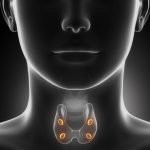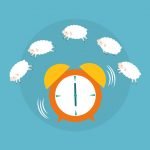Eating Disorders: A Multi-Disciplinary Approach is Best
Afsoun Khalili, BSc, ND
Tolle Causam
Melding Multiple Modalities for Best Results
In recent years I have been treating individuals with the goal of weight loss. I have found that many of these patients suffer from undiagnosed eating disorders and body image issues. My main focus in the area of eating disorders has been binge eating and compulsive disorders, as well as emotional eating. I have learned that when it comes to screening and addressing eating disorders, the roles of various healthcare providers can, in many respects, complement each other. Although the modalities, approaches, and methods used may vary, in the end everyone’s goal is to help patients improve their quality of life.
In 2004 we started a weight loss program at our CCNM teaching clinic (the Robert Schad Naturopathic Clinic, or RSNC) called “Be Your Best Self” – a healthy lifestyle change and weight management program focused on supporting patients who are emotional eaters. Over the years we have treated a large number of individuals for weight loss and emotional eating. We have found that in conjunction with cognitive behavioral therapy (CBT), our various naturopathic modalities can make a significant difference in these patients’ well-being and coping strategies.
We have discovered that the best results are achieved when more than one healthcare professional is involved. Depending on the background and experience of a naturopathic doctor, our role can be adjunctive, complementary, or simply supportive. Our experience suggests that when the management of eating disorders is a multidisciplinary approach involving psychiatrists, psychologists, endocrinologists, dentists, gastroenterologists, internists, and naturopathic doctors, the patients will benefit the most. This is especially the case when members of their healthcare team work closely with one another and maintain open communication and mutual respect.
Evaluation
A number of questionnaires and scales exist that can be used by clinicians in patient interviews to help determine their clinical diagnoses. These include clinician-administered measures such as the Eating Disorder Examination (EDE) and Yale-Brown-Cornell Eating Disorder Scale (YBC-EDS), which can be completed within 10-40 minutes. There are also self-reported instruments available, eg, Diagnostic Survey for Eating Disorders (DSED), Bulimia Test-Revised (BULIT-R), Eating Attitudes Test (EAT), Eating Disorder Examination-Questionnaire (EDE-Q), Eating Disorders Inventory-2 (EDI-2), and Eating Disorders Questionnaire (EDQ). These instruments are also helpful for initial screening purposes, but should be supplemented by a detailed assessment by trained clinical interviewers.1
Anorexia nervosa and bulimia nervosa are primarily psychiatric disorders characterized by severe disturbances of eating behavior. As a result, their treatment requires additional experience and training.1 I have found that collaboration with other healthcare providers becomes even more important in the treatment of these disorders.
As naturopathic doctors, we strive to identify the underlying cause of a particular condition. A big advantage of this approach, when working with patients with eating disorders, is helping patients identify some of the reasons for their behavior and, as a result, find solutions or strategies for how to best deal with their issues and reduce the frequency of the behavior.
In most of the eating disorder studies I have read, an emphasis is placed on making a proper assessment of eating disorder symptoms. This in turn helps in determining a proper diagnosis of the eating disorder, as well as identifying target symptoms and behaviors that can then be addressed in the treatment plan. A detailed report of food intake during a single day in the patient’s life is also recommended. I have found, however, that for certain individuals, keeping a diet diary or talking about their diet can be a behavioral trigger. As such, clear communication with the patient about what will work best for them is very important. Similar to any other type of intake, gathering information about the patient’s family history is also relevant.
When addressing eating disorders, a detailed physical examination is recommended. It is advised to pay close attention to factors such as vital signs, physical status (including height and weight), jugular venous pressure, and heart sounds. Also look for abnormalities such as delayed capillary refill, salivary gland enlargement, scarring on the dorsum of the hands (evidence of self-injurious behavior), muscular weakness possibly due to hypocalcemia, and gait and eye abnormalities. Body mass index (BMI) has gained increasing attention in research and clinical settings as a tool for assessing eating disorder patients. According to several studies, regular monitoring of BMI should be done.1
Treatment
In conventional medicine, nutritional rehabilitation, along with some form of re-educative psychotherapy (helping the patient to cope more effectively with current behaviors and conflicts), remains the mainstay of management of anorexia nervosa. Both fluoxetine (SSRI) and CBT have been found to be effective for bulimia nervosa.1
Our various naturopathic treatment modalities, especially personalized nutritional interventions, can be extremely helpful in the treatment of eating disorders. However, this article is less about naturopathic treatment, and more about emphasizing the value of collaborating with other healthcare providers and including diverse treatment modalities like psychosocial interventions, psycho-education, individual and family therapy, and even group therapy.
Cognitive behavioral therapy, lux white light (active light) therapy, and guided affective imagery therapy2 have all been shown to significantly decrease binge eating and improve mood and purging behaviors, as well eating disorder-related attitudes, in general.1 Some patients have also found groups such as Overeaters Anonymous to be very helpful as adjuncts to initial treatments and for prevention of subsequent relapses.1
In the end, the best approach for the treatment of eating disorders appears to be a multidisciplinary one, where open communication and mutual respect is maintained among practitioners and where the patients’ values and well-being are the primary focus.
References:
- Chakraborty K, Basu D. Management of anorexia and bulimia nervosa: An evidence-based review. Indian J Psychiatry. 2010;52(2):174-186.
- Leuner H. Guided affective imagery (GAI). A method of intensive psychotherapy. Am J Psychother. 1969;23(1):4-21. Available at: https://www.synthesiscenter.org/articles/0340.pdf. Accessed March 30, 2017.
 Afsoun Khalili, BSc, ND, is a naturopathic doctor and a graduate of the Canadian College of Naturopathic Medicine (CCNM). Dr Khalili is co-owner of Khalili Zambri and Associates Naturopathic Healthcare in North York, Ontario. She is also an associate professor and clinic faculty member at CCNM, teaching primary-care medicine and supervising 4th-year clinical residents at The Robert Schad Naturopathic Clinic. Website: www.khalilizambri.com
Afsoun Khalili, BSc, ND, is a naturopathic doctor and a graduate of the Canadian College of Naturopathic Medicine (CCNM). Dr Khalili is co-owner of Khalili Zambri and Associates Naturopathic Healthcare in North York, Ontario. She is also an associate professor and clinic faculty member at CCNM, teaching primary-care medicine and supervising 4th-year clinical residents at The Robert Schad Naturopathic Clinic. Website: www.khalilizambri.com










